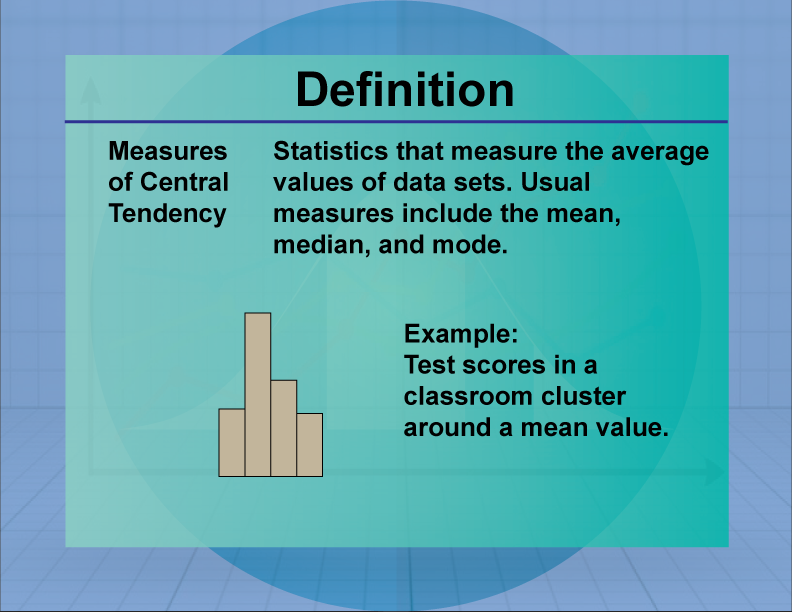
It is occasionally called an average or just the center of the distribution. Moreover it does not provide information regarding individual data from the dataset where it gives a summary of the dataset.

You can think of it as the tendency of data to cluster around a middle value.
Define central tendency in statistics. In statistics the central tendency is the descriptive summary of a data set. Through the single value from the dataset it reflects the centre of the data distribution. Moreover it does not provide information regarding individual data from the dataset where it gives a summary of the dataset.
Central tendency is a descriptive summary of a dataset through a single value that reflects the center of the data distribution. Along with the variability dispersion of a dataset central tendency is a branch of descriptive statistics. The central tendency is one of the most quintessential concepts in statistics.
A measure of central tendency is a single value that represents the center point of a dataset. This value can also be referred to as the central location of a dataset. In statistics there are three common measures of central tendency.
Central tendency is a descriptive summary of a dataset through a single value that reflects the center of the data distribution. Along with the variability dispersion of a dataset central tendency is a branch of descriptive statistics. The central tendency is one of the most quintessential concepts in statistics.
One definition of central tendency is the point at which the distribution is in balance. 2 shows the distribution of the five numbers 2 3 4 9 16 placed upon a balance scale. If each number weighs one pound and is placed at its position along the number line then it would be possible to balance them by placing a fulcrum at 68.
In statistics a central tendency is a central value or a typical value for a probability distribution. It is occasionally called an average or just the center of the distribution. The most common measures of central tendency are the arithmetic mean the median and the mode.
A measure of central tendency is a single value that describes the way in which a group of data cluster around a central value. To put in other words it is a way to describe the center of a data. A measure of central tendency is a summary statistic that represents the center point or typical value of a dataset.
These measures indicate where most values in a distribution fall and are also referred to as the central location of a distribution. You can think of it as the tendency of data to cluster around a middle value. Chaplin 1975 defines central tendency as the representative value of the distribution of scores.
English English 1958 define measure of central tendency as a statistic calculated from a set of distinct and independent observations and measurements of certain items or entity and intend to typify those observations. One definition of central tendency is the point at which the distribution is in balance. 2 shows the distribution of the five numbers 2 3 4 9 16 placed upon a balance scale.
If each number weighs one pound and is placed at its position along the number line then it would be possible to balance them by placing a fulcrum at 68. Central tendency is defined as the statistical measure that identifies a single value as representative of an entire distribution It aims to provide an accurate description of the entire dataIt is the single value that is most typicalrepresentative of the collected data. Central tendency refers to the value derived out of the random variables from the set of data that reflects the center of the distribution of the data and which generally can be described using different measures like mean median and the mode.
As evident from the image central tendency can be classified into 3 classes mean median and mode. Before we get into the details of each it is worth taking a look at the requisite properties of an ideal measure of central tendency as defined by Prof. The measure needs to be based on all observations in the data.
Measure means methods and central tendency means average value of any statistical series. Thus we can say that central tendency means the methods of finding out the central value or average value of a statistical series of quantitative information. The term central tendency relates to the way in which quantitative data tend to cluster around some value.
A measure of central tendency is any of a variety of ways of specifying this central value. Central tendency is contrasted with statistical dispersion spread and together these are the most used properties of distributions.